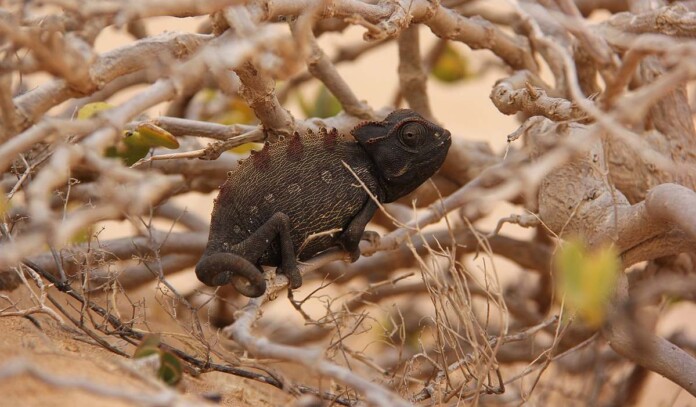
The search for alternative, energy-efficient heating and cooling technologies that do not run on fossil fuels has intensified. Imitating the desert-dwelling chameleon, Chinese scientists have developed an energy-efficient and cost-effective coating for homes.
They say the new material can keep buildings cool in summer or warm in winter without using extra energy.
“Many desert creatures have special adaptations that allow them to survive in harsh environments with large daily temperature differences,” Dr. Fuqiang Wang, author of the paper describing the invention and a researcher at Harbin Institute of Technology said. “For example, the Namaqua chameleon, native to southwest Africa, changes its color to regulate its body temperature as conditions change.”
Specifically, the creature appears light gray at high temperatures, reflecting sunlight and keeping it cool, and then turns dark brown as it cools to absorb heat instead.
This unique ability is a natural example of passive temperature control, a phenomenon that can be adapted to create more energy-efficient buildings.

But many systems, such as cooling paints or colored steel tiles, are designed only to keep buildings cool or warm and cannot switch between modes.
Inspired by the Namaqua chameleon, Dr Wang and his colleagues wanted to create a color-changing coating that adapts to fluctuations in outside temperature.
The team mixed thermochromic microcapsules, specialized microparticles and binders to form a layer of suspension, which they sprayed or brushed onto a metal surface.
When heated to 68 degrees Fahrenheit, the surface began to change color from dark gray to light gray. When the temperature reached 86°F, the light-colored film reflected up to 93% of solar radiation.
“Even when heated above 175 degrees Fahrenheit for an entire day, the material showed no signs of damage,” Dr. Wang said.
The team then tested it alongside three traditional coatings—regular white paint, passive radiant-cooling paint, and blue steel tile—in outdoor tests on doghouse-sized “buildings” for all four seasons.

In winter, the new coating was slightly warmer than the passive radiative cooling system, although both systems maintained the same temperature in warmer conditions.
According to findings published in the journal Nano Letters, the new coating was significantly cooler in the summer than white paint and steel tiles.
“During the spring and fall, the new coating was the only system that could adapt to sudden temperature changes by switching from heating to cooling throughout the day,” Dr. Wang added.
The researchers say the color-changing system could save "significant" amounts of energy for regions that experience multiple seasons, while being inexpensive and easy to produce.
ORIENT news
